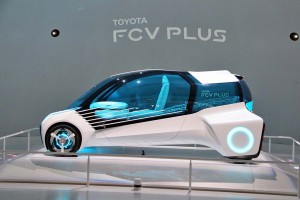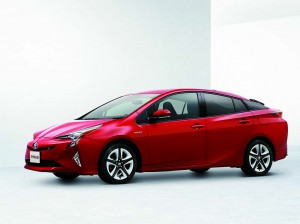The world’s largest automaker delivered the industry’s biggest profit for the July to September quarter, earnings for Toyota Motor Corp. rising 13.5% to 611.7 billion yen, or $5.0 billion, despite decreased sales and increased spending.
Toyota saw global sales slip by 42,000 vehicles, to 2.48 million, during the second quarter of its fiscal year, the decline coming in Europe, Japan and other parts of Asia. Even so, it generated 7.1 trillion yen, or $58.5 billion, an 8% increase in revenues.
TMC Managing Officer Tetsuya Otake credited, “progress in cost reduction and other profit improvement activities, in addition to favorable foreign exchange rates.” The cheap yen added about 160 billion yen, or $1.3 bilion, to Toyota’s bottom line for the quarter.
Looking forward, Toyota forecast a further decline in its fiscal year sales to 10 million vehicles. It originally anticipated volumes of 10.15 million, which was already a slight decline from the 10.17 million cars, trucks and crossovers it moved during the fiscal year ending March 2015.
Despite the decline, Toyota reclaimed its crown as the world’s best-selling automaker during the most recent quarter after briefly losing it during the first half of the calendar year. It outpaced Volkswagen AG by just a few thousand vehicles, but it is expected to hold onto its lead for the coming months, at least, as VW struggles under the impact of its diesel emissions scandal.
Among other things, VW has had to put a number of its diesel models on “stop-sale” in numerous markets, including the U.S., while it figures out how to make them comply with emissions standards.

The Toyota FCV Plus is one of several "green" concepts that debuted during this year's Tokyo Motor Show.
Toyota has had some problems of its own this past year, though, including recalls related to faulty Takata airbags and power window switches that can short out and cause fires.
The Japanese maker has also struggled to move forward with the rollout of its Toyota New Global Architecture. That’s a flexible platform that it expects to use for a wide variety of future products, starting with the upcoming launch of the fourth-generation Toyota Prius. The ultimate goal is to improve economies of scale. But like competitors such as VW, Toyota has found it costly to begin the switch to a common architecture.
The Prius wasn’t originally scheduled to be the first with the TNGA platform, but the company is still feeling the impact of a 2011 tsunami in Japan, the global economic slowdown and the safety scandal it faced at the beginning of the decade which forced it to shift engineering resources and delay some programs.
(Click Here to check out the edgy Toyota FCV Plus concept vehicle.)
The 2016 Toyota Prius will be a critical launch. While not the maker’s biggest product line, it has become a symbol of its focus on environmentally friendly technologies, and is far and away the best-selling hybrid vehicle in the world.
The carmaker recently announced that it will rapidly expand its focus on alternative powertrain technologies, including hybrids and hydrogen fuel-cell vehicles. Going into the next decade it expects to largely shift away from gasoline-only vehicles.
Toyota is just rolling out a new hydrogen car, the Mirai, and it introduced an even more advanced fuel-cell vehicle at the Tokyo Motor Show press preview last week, the Toyota FCV Plus.
Toyota was the last of Japan’s big three automakers to release its earnings. Honda saw a 7% increase in its net, to $1 billion, despite its problems with Takata recalls. Nissan, meanwhile, bumped up earnings by 38%, to $1.4 billion, raising its forecast for the full fiscal year, as well.
(Nissan earnings jump for July-September quarter. Click Here for details.)
(Honda delivers better numbers despite Takata problems. Click Here for more.)

